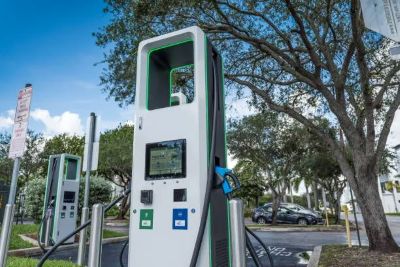


How to Build a Future-Proof and Sustainable EV Charging Business
Topper Company, a professional EV charger manufacturer in China, delivers dependable electric vehicle charging stations and comprehensive solutions.
Electric vehicles (EVs) are widely recognized as a key solution in the global effort to reduce greenhouse gas emissions and combat climate change. However, with the growing adoption of EVs comes a critical question: How sustainable is the charging infrastructure that powers them?
The answer is clear: EV charging is far more sustainable than traditional gasoline fueling, especially when powered by renewable energy. While much of the world’s electricity still comes from fossil fuels, the shift toward cleaner sources is accelerating. Renewables like solar, wind, hydro, geothermal, nuclear, and tidal energy can dramatically reduce emissions when used to power EVs.
According to the International Energy Agency (IEA), just 36% of global electricity today comes from low-carbon sources, but that number is rising rapidly. Between 2022 and 2027, global renewable energy capacity is expected to grow by 2,400 gigawatts (GW)—equivalent to the total current electricity capacity of China. Notably, over 90% of global electricity growth in the next five years will come from renewable sources.
As clean energy becomes the standard, EV charging will play a pivotal role in decarbonizing transportation and achieving carbon neutrality.
With EV adoption accelerating worldwide, businesses have an unprecedented opportunity to build sustainable, profitable EV charging networks. Here’s how to do it right:
The foundation of a successful EV charging business begins with strategic site selection:
Market Relevance: Choose locations with high EV adoption and visibility—such as commercial hubs, highway rest stops, and urban residential areas.
Scalability: Ensure the site has room to expand as demand increases.
Technological Readiness: Future-proof the location for upgrades, such as higher-capacity chargers or next-gen charging technologies.
Safety and minimal disruption during installation and maintenance are key to a successful operation:
Clear Signage: Use visible, intuitive signs during construction to direct foot and vehicle traffic safely.
Accessible Design: Create charging stations that are easy to maintain and repair, minimizing downtime.
Data-Driven Monitoring: Use real-time data to detect potential issues early and improve safety protocols.
Operational data provides the insights needed to enhance performance and profitability:
Performance Monitoring: Track KPIs like uptime, usage rates, and transaction volumes to optimize your network.
Revenue Optimization: Use customer behavior data to apply dynamic pricing models and improve ROI.
Energy Management: Incorporate renewable energy (e.g., solar panels) and monitor energy usage to reduce operating costs and carbon emissions.
EV technology evolves rapidly—your business must keep pace:
Upgrade-Ready: Design infrastructure to support future technologies with minimal disruption.
Modular Design: Use modular systems that allow easy component replacement or expansion.
Interoperability: Ensure compatibility with various EV brands and charging protocols (e.g., CCS, CHAdeMO, Type 2).
Remaining current on industry trends, technology, and regulations ensures long-term success:
Networking: Join industry forums and attend EV expos and conferences.
Continuous Training: Keep your workforce informed on the latest tools, technologies, and standards.
Regulatory Compliance: Monitor evolving local and international laws to maintain compliance and avoid costly setbacks.
Sustainability in EV charging doesn’t end at the plug:
Circular Economy: Use recycled or sustainable materials for charger manufacturing. Establish take-back and recycling programs for EV batteries and electronic waste.
Renewable Integration: Partner with green energy providers and install solar panels or wind turbines to power your stations.
Energy Storage: Implement on-site battery storage systems to reduce peak-load demand and provide backup during outages.
EV charging infrastructure is not only central to the growth of electric mobility—it’s also a cornerstone of the clean energy transition. By carefully selecting locations, prioritizing safety and service, harnessing data, and embracing future-ready designs, businesses can build robust, sustainable EV charging networks.
As the energy landscape evolves and renewables become the norm, EV charging operators must align with sustainability goals to stay competitive and environmentally responsible. The true future of sustainable mobility lies not only in EVs themselves, but in the smart, clean, and scalable infrastructure that keeps them moving.Know more about Google SEO Directory
